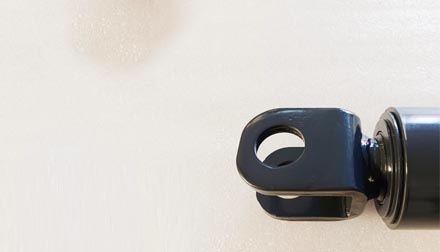Nov . 10, 2024 07:44 Back to list
Hydraulic Cylinders for Floor Jacks and Automotive Lifting Solutions
Understanding Floor Jack Hydraulic Cylinder Products
When it comes to automotive maintenance and repair, one of the most essential tools in any mechanic's arsenal is the floor jack. This tool not only makes it easier to lift heavy vehicles but also enhances safety during repairs. At the heart of a floor jack's operation is the hydraulic cylinder, a critical component that facilitates the lifting mechanism. This article aims to explore the various aspects of floor jack hydraulic cylinder products, including their types, working principles, and maintenance tips.
What is a Hydraulic Cylinder?
A hydraulic cylinder is a mechanical device that converts hydraulic energy into linear force. It consists of a cylindrical barrel containing a sliding piston. The hydraulic fluid, usually oil, is pumped into the cylinder, creating pressure that pushes the piston upwards. This upward movement effectively lifts the load attached to the jack.
Types of Floor Jack Hydraulic Cylinders
1. Single-Stage Hydraulic Cylinders These cylinders are the most straightforward design, featuring one piston that extends and retracts to lift and lower loads. They are typically easier to use and maintain, making them a popular choice for home mechanics.
2. Double-Stage Hydraulic Cylinders For heavier lifting tasks, double-stage cylinders are more appropriate. These feature two pistons—an inner piston that lifts initially, followed by the outer piston that extends further to achieve greater lift. This design is particularly useful for heavy-duty applications, such as lifting trucks or SUVs.
3. Bottle Jacks While not traditional floor jacks, bottle jacks employ hydraulic cylinders in a vertical design. They are particularly compact and portable, making them ideal for roadside emergencies. However, their lifting capacity is generally limited to lower heights, making them less suitable for garage use.
How Do Floor Jack Hydraulic Cylinders Work?
The operation of a floor jack equipped with a hydraulic cylinder can be broken down into several basic steps
1. Setup The jack is positioned underneath the vehicle's lifting point, ensuring a stable base for lifting.
2. Hydraulic Pumping The user activates the hydraulic pump, typically through a lever. This pump forces hydraulic fluid into the cylinder.
3. Lifting Action As hydraulic fluid fills the cylinder, the pressure generated pushes the piston upward, lifting the vehicle.
floor jack hydraulic cylinder products

Advantages of Hydraulic Cylinders in Floor Jacks
The hydraulic system enhances the efficiency and safety of floor jacks in several ways
- Ease of Use Hydraulic jacks require minimal effort to lift heavy loads compared to mechanical jacks, making them user-friendly even for those with limited strength.
- Safety Mechanism Most hydraulic jacks come equipped with safety features such as overload protection and secure locking mechanisms, which help prevent accidents during use.
- Versatility Hydraulic cylinders can accommodate a wide range of vehicles and loads, making them suitable for various automotive applications.
Maintenance Tips for Hydraulic Floor Jacks
Proper maintenance ensures the longevity and reliability of your hydraulic jack. Here are a few tips
1. Regular Inspection Check for any leaks in the hydraulic system, as even small leaks can impair performance.
2. Fluid Replacement The hydraulic fluid should be replaced periodically to maintain the efficiency of the jack.
3. Cleaning Keep the exterior and lift pads clean to prevent dirt and debris from affecting the operation.
4. Storage Store the jack in a cool, dry place and avoid overloading it beyond its rated capacity.
Conclusion
Floor jack hydraulic cylinder products play a vital role in automotive repairs and maintenance. Understanding their functionality, types, and maintenance requirements can not only enhance the performance of your tools but also ensure safer working conditions in the garage. Whether you are a professional mechanic or an enthusiastic DIYer, investing in a quality floor jack with a reliable hydraulic cylinder is instrumental in achieving efficient and safe vehicle repairs.
-
1.5 Ton Flipping Oil Cylinder 70/82-40-217-720 - Hebei Shenghan | Hydraulic Solutions, Customization
NewsSep.01,2025
-
1.5 Ton Flipping Oil Cylinder 70/82-40-217-720 - Hebei Shenghan Hydraulic Machinery Co., Ltd.|Precision Engineering&Customizable Hydraulic Components
NewsSep.01,2025
-
1.5 Ton Flipping Oil Cylinder 70/82-40-217-720 - Hebei Shenghan
NewsSep.01,2025
-
1.5 Ton Flipping Oil Cylinder 70/82-40-217-720-Hebei Shenghan Hydraulic Machinery Co., Ltd.|Customization, Chrome-Plated Piston Rod, Indel Seals
NewsSep.01,2025
-
1.5 Ton Flipping Oil Cylinder 70/82-40-217-720-Hebei Shenghan|Customizable Hydraulic Cylinder&Durable Oil Cylinder
NewsSep.01,2025
-
1.5 Ton Flipping Oil Cylinder 70/82-40-217-720 | Hebei Shenghan
NewsSep.01,2025
